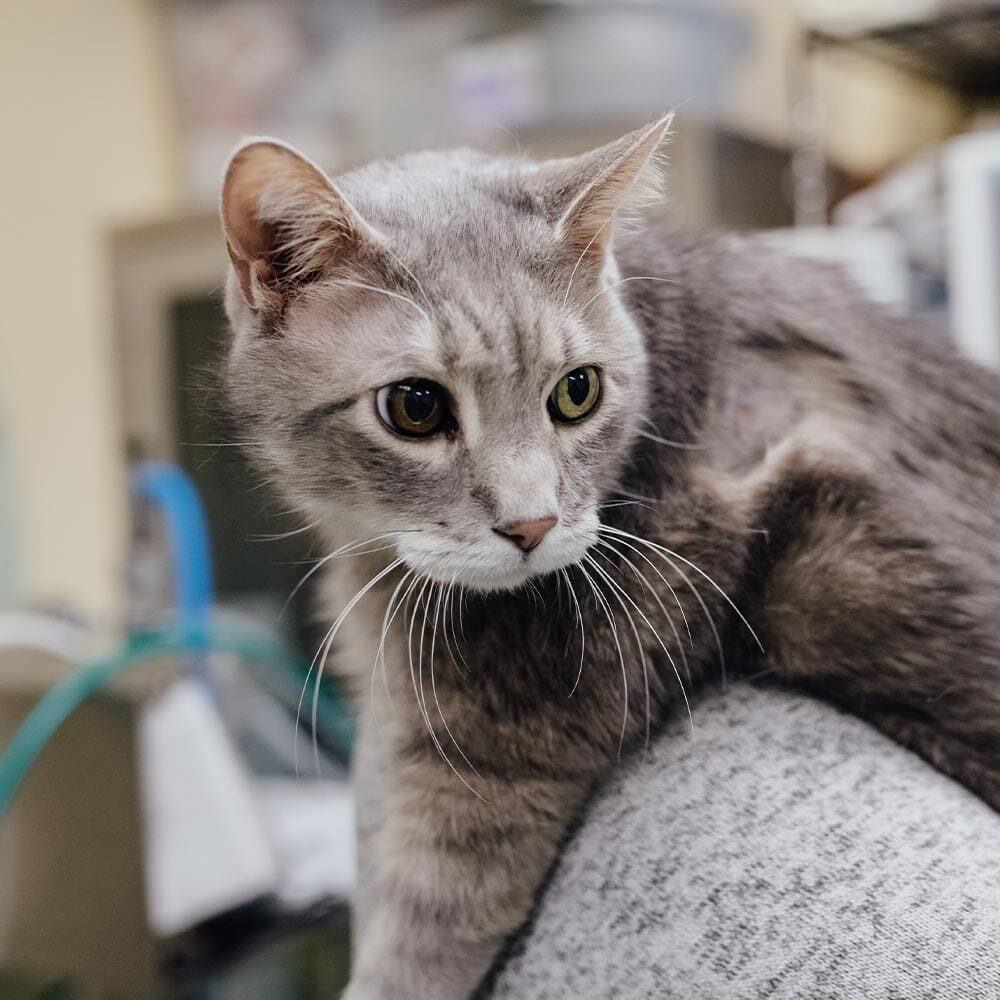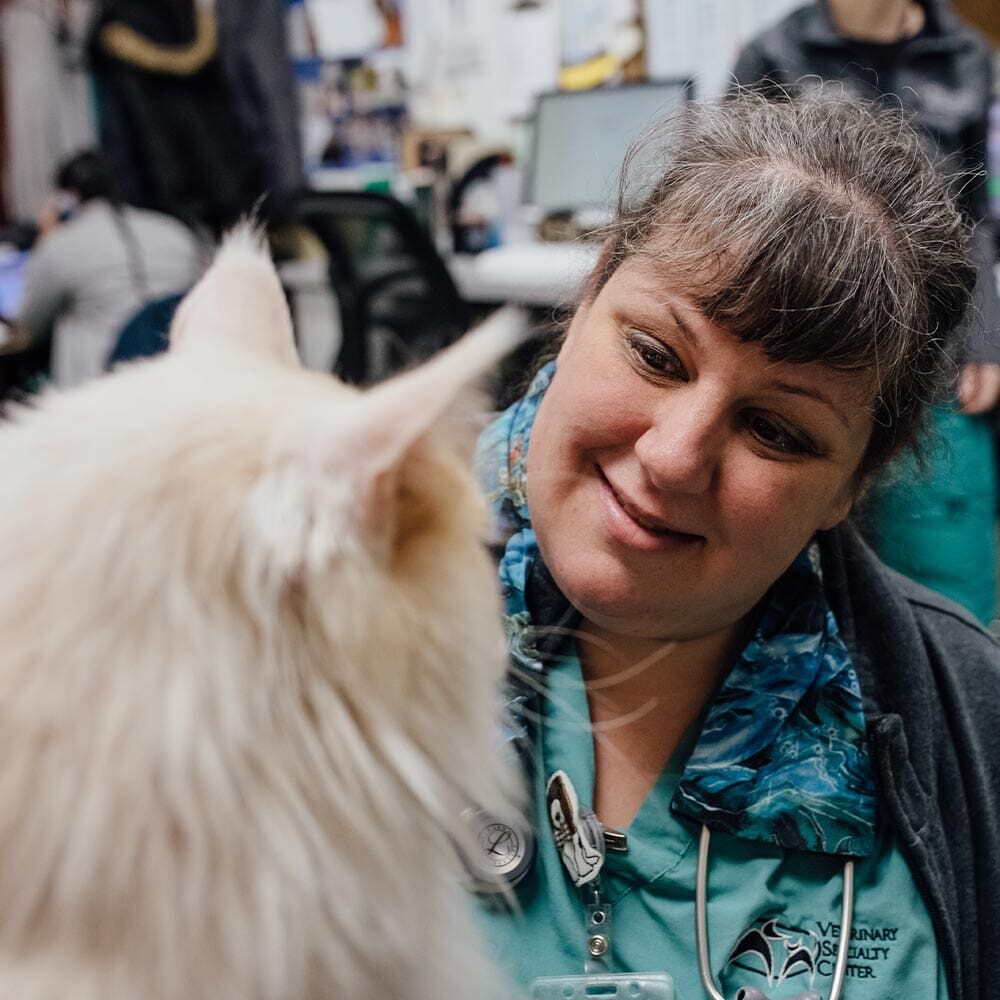What Causes Cholangiohepatitis in Cats?
There are two common variants of cholangiohepatitis, lymphocytic-plasmacytic or neutrophilic.
Lymphocytic-plasmacytic cholangiohepatitis is an immune-mediated (autoimmune) condition. The immune system has both pro-inflammatory and anti-inflammatory chemical triggers as well as recognition of self (the own body’s cells); an immune-mediated condition is one in which these mechanisms are deranged. In autoimmune conditions, the immune response is activated against the body’s own cells. The immune chemicals attack the bile ducts and surrounding liver cells, interfering with normal liver function.
Neutrophilic cholangiohepatitis is generally caused by a bacterial infection that travels from the intestinal tract into the gall bladder and bile ducts. In some patients, the inflammation continues after the infection is cleared, and becomes a secondary immune-mediated condition.


Clinical Signs
Because the liver does not have a good pain sensation, many patients do not show signs of disease until it has advanced to the point of causing significant liver and biliary function loss. Symptoms can include decreased appetite, weight loss, vomiting, diarrhea, jaundice, or abdominal fluid accumulation.
Diagnosis
When patients are suspected of having cholangiohepatitis, blood tests and imaging studies are recommended. To achieve a diagnosis, necessary diagnostics can include a liver biopsy and culture obtained through ultrasound guidance, abdominal exploratory, or laparoscopy. Because many cats with cholangiohepatitis also have inflammation of the intestinal tract, surgery is sometimes preferable for obtaining biopsy samples. Biopsy and culture results will help drive therapeutic decisions as well as prognosis.
Treatment
Therapy for patients with cholangiohepatitis will depend on the severity of the patient’s condition. Some patients are profoundly ill and need to be hospitalized for intravenous fluids and support. Because many patients have weight loss and a poor appetite, some will need a temporary feeding tube placed at the time of admission or diagnostics.
Treatment for immune-mediated lymphocytic and plasmacytic forms of cholangiohepatitis is often corticosteroids (prednisone) with or without other immunomodulating medications.


Patients with neutrophilic cholangiohepatitis are usually treated with antibiotics. Antibiotic choice is best made based on a culture of liver or bile. Broad-spectrum antibiotics are generally started on admission and then the antibiotic choice may be adjusted based on the culture results.
Liver supplements are often used adjunctively to standard therapy for patients with cholangiohepatitis and include S-adenosylmethionine (Sam E), milk thistle, or its equivalent. Ursodiol is a bile acid that helps reduce the viscosity of bile and improve flow through diseased bile ducts. Sometimes, liver-specific diets are recommended as well. Special diets for liver disease may be obtained from your primary care veterinarian’s office.
Prognosis
Some cats treated for cholangiohepatitis enjoy a complete resolution of their liver inflammation without long-term effects. This is often possible when patients are evaluated at the first sign of liver enzyme elevation, and appropriately diagnosed and treated. Because it can take some time for patients with liver inflammation to show signs of illness, liver enzyme elevations are sometimes ignored until the patient is quite ill. Some of these patients continue to have unrelenting inflammation that requires lifelong therapy and monitoring. Chronic, uncontrolled liver inflammation can lead to scar tissue, the end result of which is cirrhosis of the liver and failure of the organ.
Cholangiohepatitis can be seen along with other concurrent immune-mediated illnesses such as inflammatory bowel disease and pancreatitis. These chronic inflammatory conditions generally continue lifelong.
Long Term Follow-Up
Most patients with significant cholangiohepatitis, particularly those with coincident inflammation of the intestine and pancreas are followed by the internal medicine specialists at Veterinary Specialty Center. Once treatment is started, bloodwork should be rechecked within a few weeks. Dose and choice of medications will be based on response to therapy, with the goal of reducing to the lowest effective dose of medication. Because decisions about changes in medication are based on observations made during the physical exam in addition to other testing, we recommend that follow-up for this disease be done at Veterinary Specialty Center depending on how a pet is doing. All routine preventive care should continue with your primary care veterinarian.
Patients with infectious, neutrophilic cholangiohepatitis that fully recover clinically and biochemically often are released from follow-up with a specialist to continue all routine care at the primary care veterinarian’s office.

